Ryan Hall's Blog, page 183
March 2, 2017
Over 16,000 Runners Just Found Out They’re Running NYC
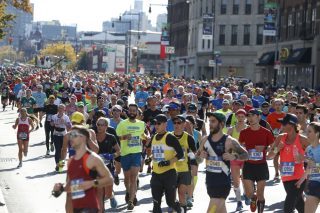
2016 New York City Marathon, Photo: Shutterstock.com
On Thursday, the TCS New York Marathon notified 16,211 athletes of their acceptance into the 2017 event through the marathon’s non-guaranteed entry drawing. There were a total of 98,247 applications.
Runners who were accepted today join those who previously received guaranteed entry into the 2017 race, either by meeting the qualifying time, having run the race 15 times in the past (or more) or by deferring entry into last year’s race, among other methods. Over 50,000 runners are expected to finish the 2017 TCS New York City Marathon.
“Today is the beginning of a thrilling race journey to the 2017 TCS New York City Marathon for tens of thousands of runners from across New York City’s five boroughs, throughout the country, and around the world,” said Christine Burke, director of runner products and services at New York Road Runners in a news release. “We are honored to welcome these runners into the 2017 TCS New York City Marathon field, and look forward to supporting them as they embark on an experience of a lifetime en route to November 5.”
If you weren’t one of the lucky ones, don’t fret—today also marks the opening of the official charity running program for the 2017 TCS New York City Marathon. Runners can register to participate on behalf of—and raise funds for—one of over 350 official charity partners of the race, including their largest charity partner, NYRR Team for Kids.
In 2016, 9,000 charity runners raised $36.1 million during the marathon, some as part of official charity teams and others who chose to fundraise on their own through Crowdrise. Since the inception of the official charity partner program in 2006, $235 million has been raised.
This year marks the 47th year of the TCS New York City Marathon, taking place throughout the five boroughs on November 5. For more information, visit www.tcsnycmarathon.org.
The post Over 16,000 Runners Just Found Out They’re Running NYC appeared first on Competitor.com.
Take Your Running Up A Gear By Cycling During Base Training
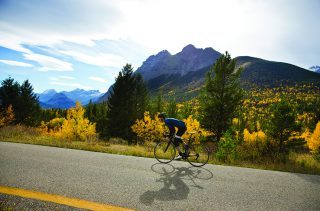
Photo: istockphoto.comPhoto: istockphoto.com
At first glance, the similarities between running and bicycling seem striking. Both activities require serious aerobic fitness, and both depend on lower-body muscles to provide the bulk of the required power. But the differences are also profound. Just look at the equipment necessary for each activity.
There are also differences in the physical requirements and training demands of cycling and running. In those differences, however, lies a great opportunity for effective cross-training. Runners who incorporate cycling-based training into their routines get a break from the relentless pounding that running inflicts; and cycling also greatly strengthens the quadriceps, a muscle group that many runners incorrectly assume is always adequately stimulated by running alone.
“Cycling can give runners a very nice aerobic boost,” says Travis Macy, a running and multisport coach who ran cross country for the University of Colorado before turning to ultra-distance running and mountain biking. “It also provides a new experience, decreasing the mental burnout and physical overtraining that can occur when an athlete focuses on just one activity.”
Macy advises competitive runners to try cycling after their goal race seasons, as they resume base training. He recommends building toward long rides of 90 to 120 minutes at a moderate pace for extended aerobic work. Recreational runners can also benefit from rides in the 60- to 90-minute range. As cycling fitness improves, he suggests incorporating high-cadence bursts at 100–120 RPM for a few minutes at a time to boost the workout’s intensity.
RELATED: How a Runner Can Build a Huge Aerobic Base
First Gear
Even the rustiest, dustiest old clunker can likely be spruced up by a skilled mechanic for a reasonable fee. Take your old bike to a dedicated cycling shop and ask for a general tune-up. This will ensure that the brakes work properly (something you don’t want to find out about the hard way), the shifting functions correctly and the tires are in decent condition.
Once you’re confident that your bike is ready for action, begin cycling training by replacing one or two of your weekly recovery runs with a cycling day. Many running schedules include two or three “recovery runs” each week. But honestly, when is the last time that an “easy run” truly left you feeling recovered? A gentle 30- to 45-minute bike ride can flush out your muscles while leaving you energized for your next hard run.
Second Gear
If you’re eager to jump into cycling workouts with a bit more intensity, make sure your steed is set to handle the increased challenge. Equipment-wise, there’s no need to break the bank. New tires, perhaps a bit skinnier and run at a higher pressure than your old set, will deliver a far livelier ride. A new saddle, maybe a new chain or some cycle-specific apparel could help prepare you for the next level.
After a month or so of easy riding, try upping your commitment a notch. Just as with running, one of the simplest yet most effective ways to increase the demands of cycling is to head for the hills. Seeking out steeper riding circuits will ensure that your aerobic and anaerobic systems get pushed to new levels. Stuck with flat roads? Keep shifting up to a harder gear until you struggle to maintain a constant 80–90 pedal rotations per minute for 60 to 90 minutes. If running is your main interest, however, be sure not to treat these more demanding bike rides like easy run days.
Third Gear
If you’re enjoying long, hard rides, it may be time to think about some serious bike upgrades. The usual logic for maximizing your purchasing power in cycling is that lighter, stiffer wheels deliver the best bang for your buck. Here’s another option: Get a professional bike fitting. A pro bike fitter will check out every detail of your saddle height, handlebar height and other parameters can lead to substantial gains in both comfort and performance.
To continue upping the intensity of your cycling workouts, there’s one priceless piece of advice that works the same way in cycling as it does in running: Seek out good athletes and try to hang with them. Intervals, hill repeats and other programmed workouts for cyclists are similar for riders and runners, though biking sessions often require an increased time investment. They can also be a blast, especially as you learn the subtleties of drafting, the all-important tactical component of bike racing.
RELATED: Start Cycling to Become a Better Runner
The post Take Your Running Up A Gear By Cycling During Base Training appeared first on Competitor.com.
Why You Should Know This 26-Year-Old Breakout Ultrarunner
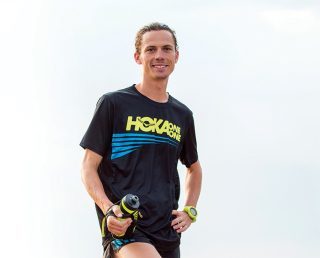
Photo: Myke Hermsmeyer / @mykehphoto / mykejh.com
Jim Walmsley became the break-out star of the ultrarunning world in 2016, recording big wins, smashing course records and setting a spectacular new fastest known time (FKT) running rim to rim to rim across the Grand Canyon and back. He covered the 42-mile out-and-back route with 24,000 feet of vertical change in 5 hours, 55 minutes and 20 seconds—26 minutes faster than the previous mark set by Rob Krar. Walmsley, a former Air Force Academy runner from Flagstaff, Ariz., also won nine of the 10 races he entered last year from 30K to 100 miles, with the only blemish being the Western States 100. In that race, he was well ahead of record pace, only to take a wrong turn and go off-course before eventually finishing 20th.
RELATED: Chasing Jim Walmsley On His Record Grand Canyon Run
What was the key to your success last year?
It was all about big mileage. Before 2016, I think I had run just one 100-mile week of training in my life, and in 2016 alone, I ran more than 20. I logged about 90 miles a week as a 16-, 17-, 18-year-old kid in high school. But then my college coach had the foresight to back my miles off a bit, which was smart because I had to adjust to altitude, deal with the challenges of the Air Force Academy and the workload of classes. But running a lot of miles has always been what’s worked for me, and this past year, I kind of got back to it.
What’s it like to be part of a fast and exciting youth movement in ultrarunning?
It’s pretty cool to see so many guys running so fast and taking down so many FKTs. I tell people if they’ve seen the “Valley Uprising” film about the Yosemite rock climbing revolution with the rock climbers that are doing bigger, faster, cooler climbs, that’s kind of what’s going on in ultrarunning. In my own romanticized way, [I think] it would be really cool to bring those vibes into ultrarunning. I don’t think people know what is possible yet and that makes it wide open to do all sorts of big things in the sport.
How do you fuel?
One of the first things I tell people about ultrarunning is that it’s really an eating contest. If you want to run well, you need to take in a lot of calories. For the races and runs I’ve done, I basically fuel on all sugar all day. I just think it’s the quickest, fastest source of energy. For races that are 15 hours or less, I consume lots of Clif Shots and dissolve Clif Shots in water. I typically consume 300–400 calories per hour, which is basically pure carbohydrates with some salts in it.
Where’s your favorite place to run?
The Grand Canyon is an amazing place to train and run. Tim Freriks, Cody Reed and I have a 21-mile loop in the Grand Canyon in which we start at the top of Bright Angel Trail, run down to the Colorado River and then up South Kaibab Trail and back to the start along the Rim Trail. We made it a segment on Strava called the Coconino Cowboy Loop, and the fastest time is 2:43. After a run like that, we’ll pizza at Pizza Hut or stop at Wendy’s and get French fries and a Frosty before booking it back to Flagstaff for a real meal.
What advice would you give to anyone considering an ultra-distance race?
Be open minded. Don’t go into a race with limits. I don’t think anyone knows what they’re capable of, so go push yourself and go find out. Sometimes you get in over your head, but that’s totally OK. You can’t be afraid to do that. You really find out the best things about yourself when you find yourself in a deep hole.
VIDEO: Jim Walmsley—The Distance
The post Why You Should Know This 26-Year-Old Breakout Ultrarunner appeared first on Competitor.com.
February 28, 2017
Why You Should Know This 26-Year-Old Breakout Ultrarunner

Photo: Myke Hermsmeyer / @mykehphoto / mykejh.com
Jim Walmsley became the break-out star of the ultrarunning world in 2016, recording big wins, smashing course records and setting a spectacular new fastest known time (FKT) running rim to rim to rim across the Grand Canyon and back. He covered the 42-mile out-and-back route with 24,000 feet of vertical change in 5 hours, 55 minutes and 20 seconds—26 minutes faster than the previous mark set by Rob Krar. Walmsley, a former Air Force Academy runner from Flagstaff, Ariz., also won nine of the 10 races he entered last year from 30K to 100 miles, with the only blemish being the Western States 100. In that race, he was well ahead of record pace, only to take a wrong turn and go off-course before eventually finishing 20th.
RELATED: Chasing Jim Walmsley On His Record Grand Canyon Run
What was the key to your success last year?
It was all about big mileage. Before 2016, I think I had run just one 100-mile week of training in my life, and in 2016 alone, I ran more than 20. I logged about 90 miles a week as a 16-, 17-, 18-year-old kid in high school. But then my college coach had the foresight to back my miles off a bit, which was smart because I had to adjust to altitude, deal with the challenges of the Air Force Academy and the workload of classes. But running a lot of miles has always been what’s worked for me, and this past year, I kind of got back to it.
What’s it like to be part of a fast and exciting youth movement in ultrarunning?
It’s pretty cool to see so many guys running so fast and taking down so many FKTs. I tell people if they’ve seen the “Valley Uprising” film about the Yosemite rock climbing revolution with the rock climbers that are doing bigger, faster, cooler climbs, that’s kind of what’s going on in ultrarunning. In my own romanticized way, [I think] it would be really cool to bring those vibes into ultrarunning. I don’t think people know what is possible yet and that makes it wide open to do all sorts of big things in the sport.
How do you fuel?
One of the first things I tell people about ultrarunning is that it’s really an eating contest. If you want to run well, you need to take in a lot of calories. For the races and runs I’ve done, I basically fuel on all sugar all day. I just think it’s the quickest, fastest source of energy. For races that are 15 hours or less, I consume lots of Clif Shots and dissolve Clif Shots in water. I typically consume 300–400 calories per hour, which is basically pure carbohydrates with some salts in it.
Where’s your favorite place to run?
The Grand Canyon is an amazing place to train and run. Tim Freriks, Cody Reed and I have a 21-mile loop in the Grand Canyon in which we start at the top of Bright Angel Trail, run down to the Colorado River and then up South Kaibab Trail and back to the start along the Rim Trail. We made it a segment on Strava called the Coconino Cowboy Loop, and the fastest time is 2:43. After a run like that, we’ll pizza at Pizza Hut or stop at Wendy’s and get French fries and a Frosty before booking it back to Flagstaff for a real meal.
What advice would you give to anyone considering an ultra-distance race?
Be open minded. Don’t go into a race with limits. I don’t think anyone knows what they’re capable of, so go push yourself and go find out. Sometimes you get in over your head, but that’s totally OK. You can’t be afraid to do that. You really find out the best things about yourself when you find yourself in a deep hole.
VIDEO: Jim Walmsley—The Distance
The post Why You Should Know This 26-Year-Old Breakout Ultrarunner appeared first on Competitor.com.
Chasing Adam: Racking Up Miles in Hong Kong


Before the dawn of the modern Strava era, back in the time of hand-scribed runner logs, people tracked their annual mileage and set goals on their wall or desk calendar. Now, with the aid of activity tracking devices, smart phones and GPS watches, those objectives loom and taunt us and are bolstered by the fact that we share them for all the world to see, motivating or whipping us to go longer or push harder to reach our annual number.
And some of us do that with miles flown. I’m guilty as charged.
While the sheer number of miles or kilometers I’ve logged on foot has never been that important to me, I do keep a careful accounting of my air miles. As a frequent flier, I greatly appreciate the perks that come with “status”—that sitting near the front of the plane, gaining special access to early boarding, free baggage, plentiful lounges, accommodating service, waived change fees, and ample space make the experience of travel so much better. Or, at least, when things don’t go as planned they make the ride a lot less unpleasant.
RELATED: Why You Should Plan a ‘Runcation’ (And Travel Tips for Runners)
With that in mind, one of my best buddies—a trail runner and fellow air travel geek—and I decided to book a long haul excursion in late 2016 that would rack up enough mileage to ensure a “top flight” status for 2017. We wanted our destination to be warm and exotic so we chose Hong Kong. Besides being a beautiful location with urban trails, delicious food, and a great history, Hong Kong was one of the best miles-per-dollar deals for flights and one that also allowed us to use our international upgrade vouchers for Business Class both going and coming. That’s enough to close almost any deal!
 The meat market at the Sheung Wan market. Photo: Adam Chase
The meat market at the Sheung Wan market. Photo: Adam Chase
We chose to stay on the Kowloon side, south of Hong Kong, where we had a full view of the harbor and access to trains and a variety of exotic outdoor markets. Taking the subway under the harbor to downtown Hong Kong, we stumble upon a building with two floors of stalls that sold raw food to restaurants. On the top floor of Sheung Wan there was prepared food and for less than a dollar we were treated to big plates of spicy vegetables, tofu and a bowl of rice.
Now we were ready for a run. So we simply started to ascend, eventually finding our way from roads to a path that took us to Victoria Peak from Victoria Road. From there we came upon incredible views of Hong Kong before descending Hong Kong Trail to University of Hong Kong and back to the city. Being built on a hillside, the city was rather easy to navigate and we quickly found future runs and places to visit, including Bowen Road, Dutch Path, Tregunter Path and the Mid Level section, where there was a thriving café culture and diverse people watching, as many expats frequent that part of the city.
 Pottinger Peak Country Trial en route to Big Wave Beach. Photo: Adam Chase
Pottinger Peak Country Trial en route to Big Wave Beach. Photo: Adam Chase
Another excursion that is a must for trail runners is to take the ferry over to Lantau Island and explore the Lantau trail system. Lantau is much less populated than either Kowloon or Hong Kong. It was easy to run right from the ferry station through the tiny villages and into the forest and hills that rise up from the port. Hong Kong can have terrible pollution and a trip to Lantau is how many city residents can get away to run in clean or at least clearer air, and feel far away from their urban existence.
For a destination run without a ferry ride, take the route from downtown Hong Kong or Mid Level all the way to Big Wave Beach, a location reminiscent of Muir Beach of the Marin Headlands near San Francisco. The beach can also be accessed via Pottinger Peak Country Trail, then Hong Kong Trail Sec. 8 and finally Tai Tam Country Trail. The run can take shorter or longer about 9 to 14 miles, depending on the route. You can also get a cab, take a bus or run back after showering at the free beach showers and refueling and rehydrating at one of the cafes in Big Wave.
RELATED: Chasing Adam—Where NorCal and SoCal Meet to Run
The post Chasing Adam: Racking Up Miles in Hong Kong appeared first on Competitor.com.
February 27, 2017
Wise Tips From Masters Runners On Staying Fit and Injury-Free

At 42, elite runner Mike Wardian has achieved multiple records, including running the world's fastest marathon in an Elvis costume at the 2016 Rock 'n' Roll Las Vegas Marathon (pictured here). Photo: Brian Metzler
Matt Mace, 56, has been on a running streak since 1985. He typically logs about 2,500 miles per year and has kept that volume going for at least a decade. He races as much as 20 times each year, including ultras, all without injury—making him something of a masters marvel, if not the envy of runners of all ages.
Jennifer Harrison, 46, a triathlon coach from the Chicago suburbs, can also point to a long streak of healthy running. Other than a short break for an Achilles injury in 2011, and bed rest during pregnancy, Harrison has been running without a break since middle school.
And then there’s elite distance-running phenom Mike Wardian, the 42-year-old from West Virginia, who recently rocked the World Marathon Challenge which consists of running seven marathons on seven continents in seven days. Aside from a bout of injury in 2012, Wardian has been crushing records and miles since 1995.
What’s the secret sauce that these masters have stumbled upon? More importantly, how can the rest of the running world take a page from their books?
The answers, as you might expect, are as individual as the runners themselves. But there are some common denominators from which everyone can benefit.
RELATED: Do’s and Don’ts for Masters Runners
Be Mindful
The response is familiar: listen to your body. Every runner knows it, but not every runner follows it. Mace, Harrison and Wardian, however, live it. “If something doesn’t feel right, I back off,” Wardian says. “I don’t care if the schedule calls for 80 miles that week. If I need to cut back to 60, I cut back to 60.”
Mace concurs. “I’m really good at being cautious if I need to be,” he says. “If something hurts, I scale back.”
Clearly it’s an approach that’s working and one that many coaches will preach. By taking a couple of days off as soon as pain shows up, runners can usually avoid taking weeks off when pushing through.
Be Realistic
Another tactic that these masters runners use is knowing their limits and respecting them. Mace says that he recognizes he’s not going to run as fast as he did 20 years ago and doesn’t try to push it. “Look, I’m not going to be dropping time off my PRs at this point,” he says. “So it’s not worth making big bumps in mileage and asking for an injury.”
Mace is also a fan of knowing what your strengths and weaknesses are with running, and then playing into them. “I’m never going to be a miler, so I don’t train to that,” he says. “I also knew early on that my threshold was 80 to 90 miles per week, not 100 or 110, so I keep that limit on myself.”
Harrison is a proponent of this approach as well. “I’ve come to peace with the fact that I’m not as fast as I used to be and I don’t try to compete with my former times,” she says. “I’ve reestablished my goals and plans for speedwork and racing.”
As a triathlete, Harrison has been able to focus on age-group awards as opposed to time goals, and she says this has been helpful to her. “In the running community, everyone is chasing PRs,” she says. “I have learned to let my ego and the clock go, and focus instead on being competitive with something other than the clock.”
Be Consistent
Consistency in training is a tenant most runners live by, and it definitely applies to these masters. When it comes to injury-free longevity, its consistency not only with regular running, but also with the approach to what works that counts. Wardian and Mace say they both train fairly similarly now as when they were younger and don’t let concerns with aging creep into their psyches. “Don’t let age dictate what you’re doing,” Wardian advises. “Let your body tell you what you’re capable of doing.”
Mace says he really hasn’t changed all that much since becoming a masters runner. In other words, if it ain’t broken, don’t fix it. “It’s not like I turned 40 and decided I had to do things differently,” he says. “I train pretty similarly now to how I always have.”
Wardian says that the one thing he has changed is running fewer miles than he used to, although his mileage still remains high. “I’ve realized that I can get by on so much less,” he says. “It’s not easy for me because I love running so much, but consistency is more important than the number of miles.”
Be A Cross-Trainer
All three of the masters runners spend time on activities other than running, and all three say that’s important. Mace, who has completed several Ironman distance races, says that swimming has been good for him. “I don’t really enjoy it,” he admits, “but I do think it helps.”
As a triathlete, Harrison also incorporates swimming and cycling into her routine and is a big believer in strength training as well. Pilates, core work and the like are all part of her regular routine. “In my 30s, I could get away without all the little things,” she says. “But now they add up.”
Even Wardian finds time for riding his bike, commuting to and from work daily. “I mix in a lot more cycling now than I used to, and I think that’s good for me,” he says.
Clearly it’s working—after a 200-mile week for the World Marathon Challenge, Wardian says he feels fantastic. “My legs feel really fresh,” he says. “I’m excited about being so fit.”
RELATED: 7 Injury Prevention Strategies for Pain-Free Running
The post Wise Tips From Masters Runners On Staying Fit and Injury-Free appeared first on Competitor.com.
Q&A with “Run the World” Author Becky Wade
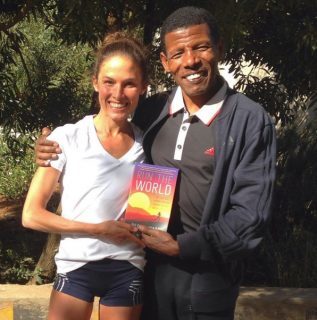
Becky Wade (left) with Haile Gebrselassie, Photo: Courtesy of @beckyswade
Becky Wade, elite marathoner, Olympic hopeful, world traveler, and food enthusiast is currently in Sululta, Ethiopia, where she first drew inspiration for her recently published book, Run the World. The book describes her year-long journey of logging more than 3,500 miles in nine different countries after becoming a recipient of the Watson Fellowship from Rice University in 2012.
Wade didn’t set out to write a book, but after her return to the U.S., her book was the aftermath and processing of her journey. “I was initially reserved about not being able to do justice to the places I explored and the people I met. But when I framed it more as a chronicle of some highlights of the year and as a large ‘thank you’ to the incredible individuals I intersected with, it became a more manageable and meaningful project,” Wade explains. Wade’s Run the World takes you on a dream journey into cultures, food, running, relationships—and we caught up with the world traveler while on her book tour to share some of her favorite parts of the journey, and what’s in store next.
You describe so many delicious meals, but also cultural food experiences in your book. What was one really memorable food experience you had?
“Food was a massive part of my trip, and one of my favorite parts about traveling! I kept a recipe collection the whole year, and whittled those down to include one per country for my book. I’d say that one of my most memorable food experiences was a make-your-own-sushi feast that Susan and Tim Griffen hosted in Tokyo. I described it in Run the World, but I still dream of the fresh catches, straight from Tsukiji fish market, and flavorful toppings that filled their dining table that night. Devouring it on their living room floor with a room full of new friends completed the experience for me.”
What inspired you to go back to Ethiopia?
“I’ve been wanting to travel again since I touched down in the U.S. (after a few weeks of recuperating at home, of course), but didn’t have a good opportunity to leave the country until recently. A conversation I had with Sara Hall at the Houston Marathon got my wheels turning, and within a few days, I booked my tickets to spend three weeks in Sululta, Ethiopia, one of my all-time favorite places in the world. I figured that right after a marathon was a great time to go, while I’m still recovering a bit and don’t have to worry so much about the jet leg and unknowns of travel. I’d love to come back here again for part of a build-up in the future!”
Now that you’ve written a book, do you have other goals in mind? Can we expect another?
“I don’t have any plans for a major project like another book (yet!), but I’d love to continue doing some smaller-scale writing for running, travel, and food publications. While training, I also work part-time at an awesome company in Boulder called Black Lab Sports, a sports tech incubator that celebrates the intersection of business, sports, and art. I’m surrounded by driven, purposeful and energetic people (many of them athletes), and it’s been a great complement to my running.”
How was your first hometown marathon experience in Houston where you placed third?
“My recent Houston Marathon experience was just the remedy I needed! After a smooth and successful marathon debut (2013 California International), my next two were tough, both condition-wise and personally. So, to have a positive experience, and a ton of fun on the course I know so well, meant a lot to me! My boyfriend Will and friend Cal helped paced me, and my parents and coach Jim Bevan were all over the place. The whole race just solidified that I’m called to the marathon distance and that I have a long way to go to reach my goals.”
What’s your favorite post-run, go-to brunch?
“Favorite post-run brunch: Sous vide (60 degrees) eggs on homemade sourdough with avocado and lots of salt and pepper. One of Will’s epic smoothies on the side (a whole Vitamix loaded with over a dozen fruits and vegetables). Probably some coffee too, unless I’m about to nap.”
RELATED: Why You Should Plan a ‘Runcation’ (And Travel Tips for Runners)
The post Q&A with “Run the World” Author Becky Wade appeared first on Competitor.com.
Gear We Love: February 2017
From weatherproof jackets to durable trail shoes to the softest denim track pants that’ll replace your jeans, our staff has highlighted our favorite pieces of gear we’ve tested this month. We swear by these items to make your running that much more enjoyable.
RELATED: Gear We Love—January 2017
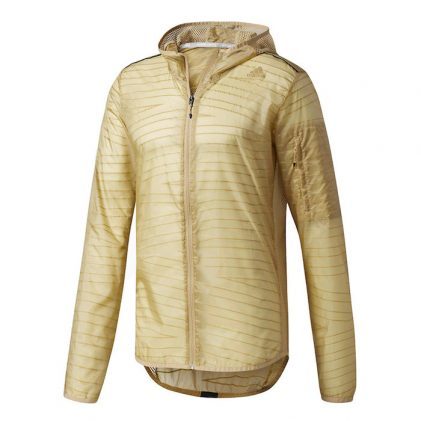
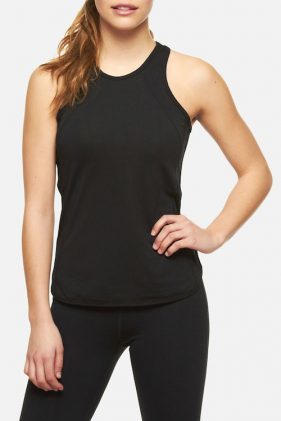
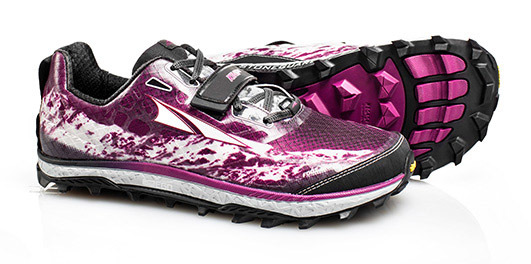
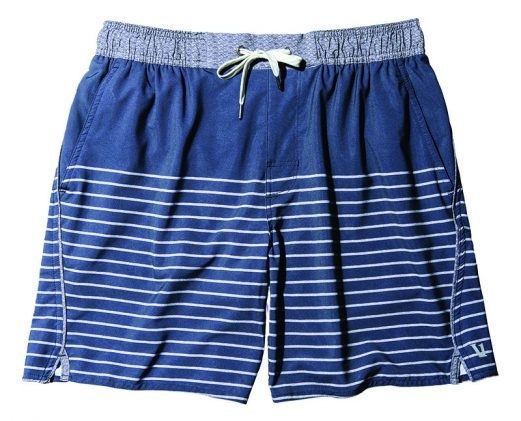
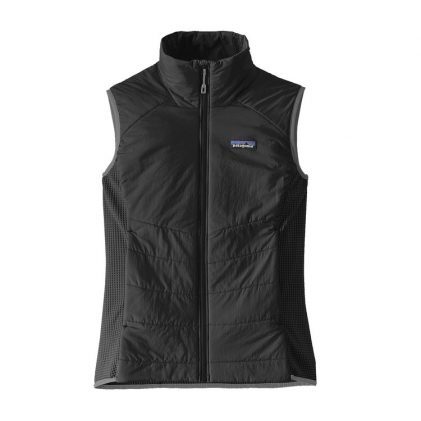
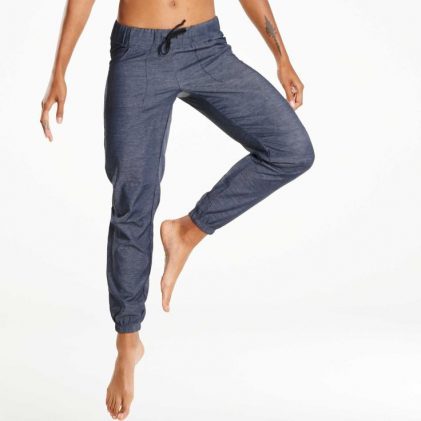
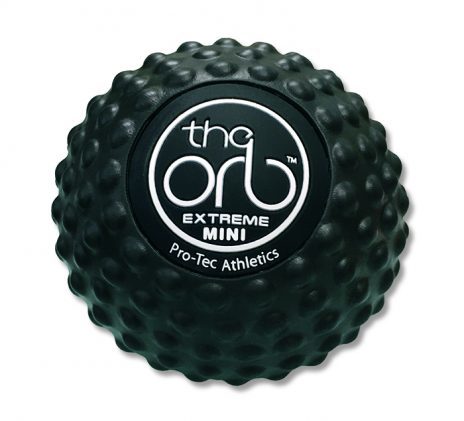
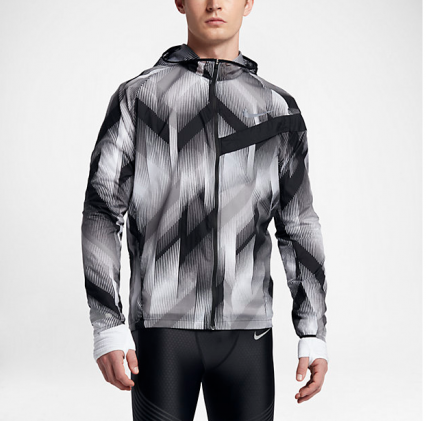
The post Gear We Love: February 2017 appeared first on Competitor.com.
February 24, 2017
Shoe of the Week: Under Armour Horizon FKT
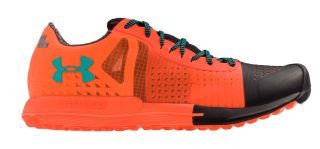
Other than the Fat Tire, Under Armour’s blue-rubber, over-sized mountain-bike-inspired trail shoe, the company hasn’t really done much in the off-road footwear space. The Horizon FKT is, however, a serious entry into the trail shoe market, and the versatility of this neutral ride offers quite a bit. The rubberized upper packs in plenty of protection, especially with its Keen-like toe bumper. A forefoot stone plate protects from underfoot protrusions as the cushioning is only moderate, making the shoe better suited for shorter runs, softer surfaces or those lighter on their feet. The outsole, with its Michelin rubber, provided testers excellent traction on a variety of surfaces, wet and dry, and the Horizon ran rather smoothly on pavement. The rubber overlays caused some irritation to some of our testers, so be sure to try the Horizon FKT on at a store where you can test them in motion to make sure they flex with and not against your foot.
This is the shoe for you if … you’re looking for a lightweight and versatile shoe for the trails that flexes with the foot.
Price: $130
Weights: 9.8 oz.
Heel-toe offset: 7mm
Info: Underarmour.com
RELATED: Shoe of the Week—Brooks Launch 4
The post Shoe of the Week: Under Armour Horizon FKT appeared first on Competitor.com.
Running Inside The Walls Of San Quentin State Prison
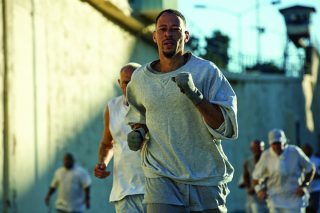
Rahsaan Thomas circles the prison’s 400-meter course.
 Rahsaan Thomas circles the prison’s 400-meter course.
Rahsaan Thomas circles the prison’s 400-meter course.
The breath of 18 inmates is still visible in the air at 8 a.m. on Nov. 16, 2016, as they line up for the start on the west side of the prison yard. Standing under the San Quentin State Prison “Field of Dreams” scoreboard wearing white and grey, mesh and cotton, they stand in stark contrast to the mandated all-black dress code of the volunteer coaches and lap counters of the 1,000 Mile Running Club.
A row of sweats, hydration and nutrition awaits runners of the seventh Annual San Quentin State Prison Marathon. Chris Scull’s repurposed Sriracha bottle filled with an electrolyte solution lies on top of a pair of sweats. Chris Schumacher, a diabetic, has saved up a stockpile of jelly packets from mess hall-issued peanut butter and jelly lunches that he plans to take every 6 miles. Markelle Taylor’s lap counter waits for him with a Snickers Bar. Lorinzo Hopson has no nutrition at all, but will be strongly encouraged to drink throughout the race since he collapsed at mile 23 during the 2014 marathon, which required medical attention for dehydration and shut down the prison yard for 15 minutes.
Head coach Frank Ruona shouts some last-minute instructions at the start. “One hundred and four full laps. The 105th lap you stay inside on the baseball field. We’re going in one and a half minutes! Make sure you hydrate. Be smart. One minute!”
“T-minus one minute!” an inmate chimes in.
Markelle Taylor looks nervous. He could barely sleep in his cell the night before thinking about his attempt to break the 3-hour barrier. Coming off a successful period of fall training where he completed just over 25 miles in three hours, a 1:17 half marathon, and 59 minutes for 10 miles, Taylor has a shot at breaking the San Quentin Marathon Open Record (which he set in 2015 in 3:16:07) and becoming the first person to run under three hours in prison.
Others, like Tommy Wickerd, have been anticipating this morning for 364 days. Some ate a few slices of leftover pizza for breakfast and hope for the best, while others set out to run as far as possible through injuries because running, they explain, has become like breathing.
At coach Ruona’s command, the runners set off on the 400-meter loop course underneath the prison yard watchtowers past palm trees and barbed wire, along the dirt of the baseball field, up through the blacktop passing the basketball courts, and loop down past a 19th-century dungeon. Many of San Quentin’s population, including these runners, are serving life sentences for murder or manslaughter. It’s the only prison in the state of California with a death row. Security is tight.
 Coach Frank Ruona notes times and checks laps.
Coach Frank Ruona notes times and checks laps.
Six minutes into the race, Taylor, whose stride can be described as long and loping, has already separated himself from the group as he approaches the 1-mile mark. Without any warning or notice, all inmates in the prison yard drop to the ground. Coach Ruona sighs and notes the time on his clipboard, which will later be deducted from each runner’s final time.
A minute later, the runners get up and continue on. This “yard down” drill, which can signal anything from a conflict to routine prisoner transport, repeats five more times over the course of the marathon for a brutal total of 53 minutes, a new San Quentin Marathon record. Obviously, the runners of the San Quentin Marathon navigate different challenges over their 26.2 miles than those in your average road marathon.
“It’s not pretty scenery. It’s fences and walls and barbed wire. You can kind of look over the wall and see a mountain a little bit, but for the most part it’s not really motivating landscape,” says Rahsaan Thomas. He’s 46, and has been here 15 years, serving a 55-years-to-life sentence. He describes his dream marathon as running in his hometown of New York City. His original reason for wanting to run a marathon stemmed from Puff Daddy’s completion of that same marathon.
“I don’t believe Sean Puffy Combs is tougher than me. No way,” says Thomas, who laughs heartedly at his own jokes. “If he can run the marathon, I figure I need to be able to do it too.”
So far his longest distance is a half marathon. Today he covers 5 miles before bowing out to the sidelines to support fellow runners with tough-love comments and to cover the story for San Quentin News, the prison’s inmate-run paper. Thomas describes the link between running and writing as both being therapeutic outlets.
“Growing up, I was told I was going to be dead by the time I was 18,” Thomas says. “I kept being told that so much that I embraced it. I said if I’m gonna die, I’m gonna die fighting. I embraced hopelessness and was doomed because I bought into that mentality.”
In prison he turned to writing to leave a positive legacy to his son and mother. He has developed a writing career from prison as the sports editor for San Quentin News, a co-founder of Prison Renaissance, a contributing writer for the Marshall Project, and the author of the book Uncaged Stories.
“I think the way we write it out, we run it out,” Thomas says. “Run out our pains, our frustrations, our difficulties. One crazy thing about this club is I think we run for a penance. We don’t get a trophy or a Scooby snack or nothing for running a marathon. There’s no Olympic gold medals, and yet so many guys are out here dedicated.”
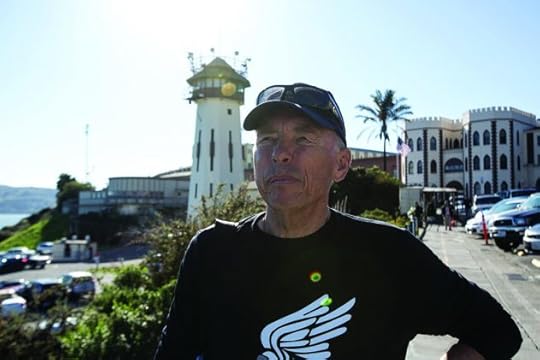 Frank Ruona, head coach of the 1,000 Mile Club
Frank Ruona, head coach of the 1,000 Mile Club
The 1,000 Mile Club is one of several volunteer-run programs at San Quentin State Prison. The prison sits on a prime piece of waterfront real estate in the affluent San Francisco suburb of Marin County. UC Berkeley journalism students volunteer with San Quentin News. Marin Shakespeare Company teaches weekly classes. With a relatively stable prison population, inmates have several opportunities to get involved in rehabilitation opportunities. For these runners, that involves training on a 400m loop day after day.
As the sun rises over the wall and lights up the prison yard, runners shed gloves and hats as the temperature rises into the upper 50s. Other than occasional encouragement from coaches and spectators, the yard is quiet enough to hear the unique rhythm of each runner’s stride on the packed dirt of the baseball field as they chip away at 26.2 miles, one 400m lap—with six different 90-degree turns—at a time.
The course, much like their life inside the walls, is monotonous and challenging, and yet something about it is freeing.
 Participants and coaches for the 2016 marathon.
Participants and coaches for the 2016 marathon.
“It’s such a privilege working with Frank and the coaches,” says Chris Scull, who would go on to finish second with a PR of 3:37:39, or what he refers to as first in the “non-Markelle division.” “It transports me out of prison for three hours every Monday night and on these event days, I’m just another member of society,” he says.
The program has come a long way since Frank Ruona first got a call from the prison’s community partnership manager in 2005 asking about getting involved in a running program at San Quentin. Ruona, then president of Marin County’s largest running club, Tamalpa Runners, forwarded on the request in a club newsletter. After getting no response, he decided to check it out himself, approaching it like he does the weekly Tamalpa track workouts he still leads every Tuesday night.
Ruona was originally a basketball guy, playing basketball his first year at Santa Clara and later coaching his son. He spent four years as an officer in the Army and 25 years in construction. As competitive age-group runner, he ran workouts with the inmates until the pain and effects of a fractured hip he first sustained in 2003 gradually sidelined him. At 71, Frank is now retired, and spends more time at the prison. Through the years, he has gathered a small group of runners from Marin County to volunteer as assistant coaches, including Kevin Rumon, Diana Fitzpatrick and Dylan Bowman, the latter of whom is a professional ultrarunner sponsored by The North Face.
Ruona’s involvement extends beyond the walls of the prison. In 2014, he got four former 1,000 Mile Club members coveted spots in Marin’s famous Dipsea trail race. He’s visited hospitals, courthouses, jails and basements from California to Washington to keep up with paroled members, providing them assistance with jobs, character references, run training, and an invitation to lunch when needed.
“I’ve become much more aware over the last few years of some of the things these guys have encountered in life,” Ruona says, explaining his experience hearing the burdens of a criminal record in reentry to society and the frustration of figuring out how to survive in the current justice system.
“They tell us that [us] coming in means a lot to them, but we get as much out of it as they get out of it,” he says. “You feel good about doing something good for them. I’m a fairly devout Catholic, and Jesus said, ‘When I was a prisoner you visited me, and when I was hungry you fed me.’ I’m just trying to do some good.”
 Chris Scull was the runner-up, finishing in 3:37:39.
Chris Scull was the runner-up, finishing in 3:37:39.
Ruona smiles when he recounts one of the runners on the team telling him and the other coaches that completing the marathon was the first time he’s set a goal and seen it through to the finish.
He isn’t an overtly excited or talkative coach, but the words and actions he uses leave an impression with the team. “Frank don’t really say too much. He’s kind of quiet,” says prisoner Eric Moody, who would struggle to make it through 8 miles of the race. “He noticed I haven’t been coming out here lately, but he bought me some tennis shoes anyways. That lets me know that he’s thinking about me and giving me some encouragement to get back out here. Good man.”
Edward Scott, who is sidelined from the marathon awaiting a decision on foot surgery, describes his transformation since joining the running club. “I was always antisocial because of some of the things that happened at the other levels, so breaking that cycle and learning to trust was huge for me,” says Scott, 48. “As I’m going back into society, I know it’s O.K. to accept help.”
 Marathoners leaving the start line.
Marathoners leaving the start line.
Like a lot of the runners, Scott started at a Level 4, or maximum- security prison, where speaking with the wrong person or walking in the wrong part of the yard could be life threatening. “In my life on the street I was always in the shadows,” Scott says. “It’s helped me come out of my shell.”
As predicted, Taylor wins the marathon, but at 15 miles his effortless stride becomes labored and his pace slows from 7:03 to 8:19 per mile. He crosses the line in 3:21:19, slower than his record-breaking time last year, and bends over in exhaustion as he receives cheers from coaches and runners.
“It was tough. This was the hardest I’ve ever run,” says Taylor, looking like someone who just came in fourth at the U.S. Olympic Trials. A teammate approaches behind him and offers a bottle of water to splash the salt off his face.
Taylor, 43, has been in here serving a life sentence since 2004. He ran cross country and track for two years in high school, and started running in prison two years ago when he saw the stress inmates experienced of facing the parole board and being denied. He thought it would help him stay on track.
Taylor views each race as an opportunity to make amends as part of his 12-step program for addicts and alcoholics by dedicating his run to a larger cause. He’s run for different ailments and people like his mother, who suffers from diabetes, but today he ran for people who struggle to forgive others as well as themselves.
 Markelle Taylor, San Quentin’s fastest runner
Markelle Taylor, San Quentin’s fastest runner
“Running … it’s just something that it does,” Taylor says. “It helps you to think and be positive, and everything is good with running. It’s been great working with Frank. He reminds me of my high school coach, Don Dooley. He was like a father to me. My stepfather died and I never knew my father, so Frank is like a father to me. The coaches like Kevin are like my uncles. Dylan is like my brother. Diana’s like mom. We’re like a family.”
His disappointment with his race fades when he describes what running provides him. “These guys here are all brothers, especially the two guys I train with, Chris and Eddie. I call them my little brothers. We push each other and train each other.”
 Tommy Wickerd met his goal of finishing the race.
Tommy Wickerd met his goal of finishing the race.
As runners continue toward the finish line, Ruona points to fourth-place finisher Tommy Wickerd, who at 49 years old is a decade into serving a 57-year sentence, and says that a year ago he was 35 pounds heavier. After failing to complete the 2015 marathon, Wickerd set two goals: to get his GED, and to complete a marathon. Today he finished one of them in just over four hours.
“I love running,” he says, elated after his finish. “It takes me away from prison.”
The post Running Inside The Walls Of San Quentin State Prison appeared first on Competitor.com.
Ryan Hall's Blog
- Ryan Hall's profile
- 21 followers



